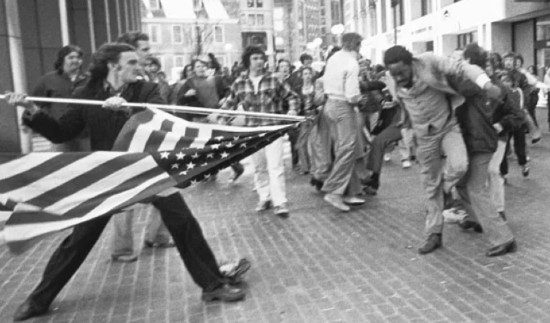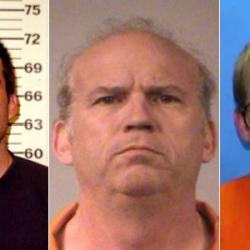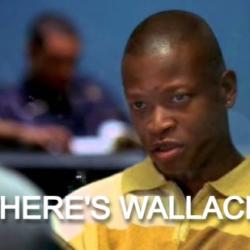It sounds like a joke: A political scientist, a pastor, and an Ivy League professor of religious studies walk into a bar …
But it’s not a joke. Just three observers making the same observation from very different angles. (None of these folks, as far as I know, developed any of their insights due to reading this blog — but they could have.)
• This (via Off the Kuff) is Mark Caro’s fascinating profile of a researcher and his research: “The Big Truth.” Subhed: “University of Chicago professor Robert Pape has spent the past year and a half examining the January 6 insurrectionists — and sounding the alarm about the future of democracy. Is America listening?”
The research Pape and his team are doing helps us to understand the millions of our neighbors who see violence as a legitimate tool to prevent the full equality of people they do not regard as legitimate Americans. That’s not quite how Pape would put it, but since he points to belief in “replacement theory” as the key factor here, it fits. Those who believe in that theory therefore also believe that any election not determined by only the votes of their irreplaceable kind — white, Christian, straight — shouldn’t count.
Pape’s scrupulous research, his measuring and re-measuring and number-crunching, has led him to a conclusion that won’t be surprising to most historians:
By April 2021, CPOST had analyzed 377 Americans arrested or charged in the Capitol attack and was able to go into greater detail about demographics and attitudes. “The people alleged by authorities to have taken the law into their hands on Jan. 6 typically hail from places where non-White populations are growing fastest,” Pape wrote in a Washington Post column, noting that two independent surveys conducted by CPOST indicated that the biggest driver was “fear of the ‘Great Replacement.’”
The riot and insurrection of January 6 thus turns out to be one more example of a well-established pattern: The growing acceptance of non-white populations prompts fear and violence from some white Americans who see that violence as a legitimate response to any threat to their exclusive legitimacy. It’s Wilmington and Colfax and Tulsa and Rosewood and a century of lynching. It’s Metacomet’s severed head on a spike as the symbol of our shining city on a hill.

That’s all terribly grim, and Pape’s matter-of-fact confirmation of this enduring grimness has me desperately seeking to distract myself. So reading that piece, I kept thinking that this motley crew of Midwestern researchers would be a terrific setting for a Three Days of the Condor-style thriller in which their research inadvertently stumbles across some evidence that nefarious conspirators don’t want them to know. (This would, alas, not bode well for the story’s version of Pape’s character, or for most of his team apart from the one plucky researcher who winds up on the run, etc. etc.) I’m a sucker for that story in all its forms — from the recent Epix series version of Condor, to North by Northwest, or Enemy of the State, or even The Man With One Red Shoe. But my impulse here to turn from grim reality to escapist story-telling isn’t helpful.
It’s comforting to retreat into stories that imagine our biggest challenge is caused by a nefarious, but small conspiracy of shadowy evildoers whose grand scheme might be overcome by one resourceful and determined underdog protagonist. But Pape’s research confirming all that grim history points to something far more daunting and difficult to address:
Violence organized and carried out by far-right militant organizations is disturbing, but it at least falls into a category familiar to law enforcement and the general public. However, a closer look at the people suspected of taking part in the Capitol riot suggests a different and potentially far more dangerous problem: a new kind of violent mass movement in which more “normal” Trump supporters — middle-class and, in many cases, middle-aged people without obvious ties to the far right — joined with extremists in an attempt to overturn a presidential election.
And, according to Pape and his research, there are 18 or 20 million such people living all across the country. These are our neighbors. And so, ultimately, the task of dealing with them does not fall exclusively to Pape and his brilliant researchers, or to the congressional panels for which he’s called to testify, or to some intrepid journalist who will receive the Maguffin from Robert Redford and publish the definitive exposé that will fix everything. We all have our parts to play as neighbors.
• On a related note, here’s former Southern Baptist leader Russell Moore on how “Fantasy Role-Playing Is Hurting America.”
Don’t worry, that’s not an old-school, ’80s-style anti-D&D rant. Moore is writing about the preference many Americans now show for a make-believe realm in which they can pretend to be heroes, but not as a game or a hobby — as a way of life that’s reshaping their politics, religion, and relationships.
This is, in other words, a variation of the argument that Russell Moore blocked me for making on Twitter years ago. It’s Moore’s attempt to do what I wrote about here 14 years ago (and have repeated ad nauseum ever since):
You can’t be doing well if it seems like an improvement to base your life and your sense of self on a demonizing slander that you know is only a fantasy. To challenge that fantasy, to identify it as nothing more than that, is to threaten to send them back to whatever their lives were like before they latched onto this desperate alternative.
That suggests to me that if we are to have any hope of disabusing them of their fantasies, then we will need to recommend some third alternative, something other than the lie or the reality that had seemed even worse.
It’s encouraging to see this argument adopted by someone like Moore. It’s good to see him reminding his audience of white evangelical pastors that their parishioners are getting caught up in things like QAnon and Great Replacement conspiracy theories because those congregants do not center their lives or their identities or their source of meaning on the gospel that those pastors are supposed to be preaching.
Now to gently, gently nudge him in the hopes that he will start to see where this leads.
• That piece from Moore and a similar recent RNS column by Donovan Schaefer have me thinking that I could start a new revenue stream for this blog by renting out my hobby horses. “Buying into conspiracy theories can be exciting – that’s what makes them dangerous,” Schaefer writes. (The column even includes a variation of Mulder’s “I Want To Believe” poster.)
Like Moore, he recognizes that conspiracy theories aren’t mainly fueled by misinformation or ignorance, but by feelings. Specifically, by the need to escape into an alternate reality in which you’re the smart one, the good one, the brave and courageous and heroic one.
Schaefer — a religious studies prof at Penn — writes:
Much of the commentary on conspiracy theories presumes that followers simply have bad information, or not enough, and that they can be helped along with a better diet of facts.
But anyone who talks to conspiracy theorists knows that they’re never short on details, or at least “alternative facts.” They have plenty of information, but they insist that it be interpreted in a particular way – the way that feels most exciting.
Schaefer and Moore offer the same diagnosis. Schaefer seems a bit further along in recognizing the template and trajectory of Satanic baby-killerism. I suppose that’s because, unlike Moore, he hasn’t spent the past 30 years as a professional enforcer of Satanic baby-killerism in its politest, most mainstream form.












